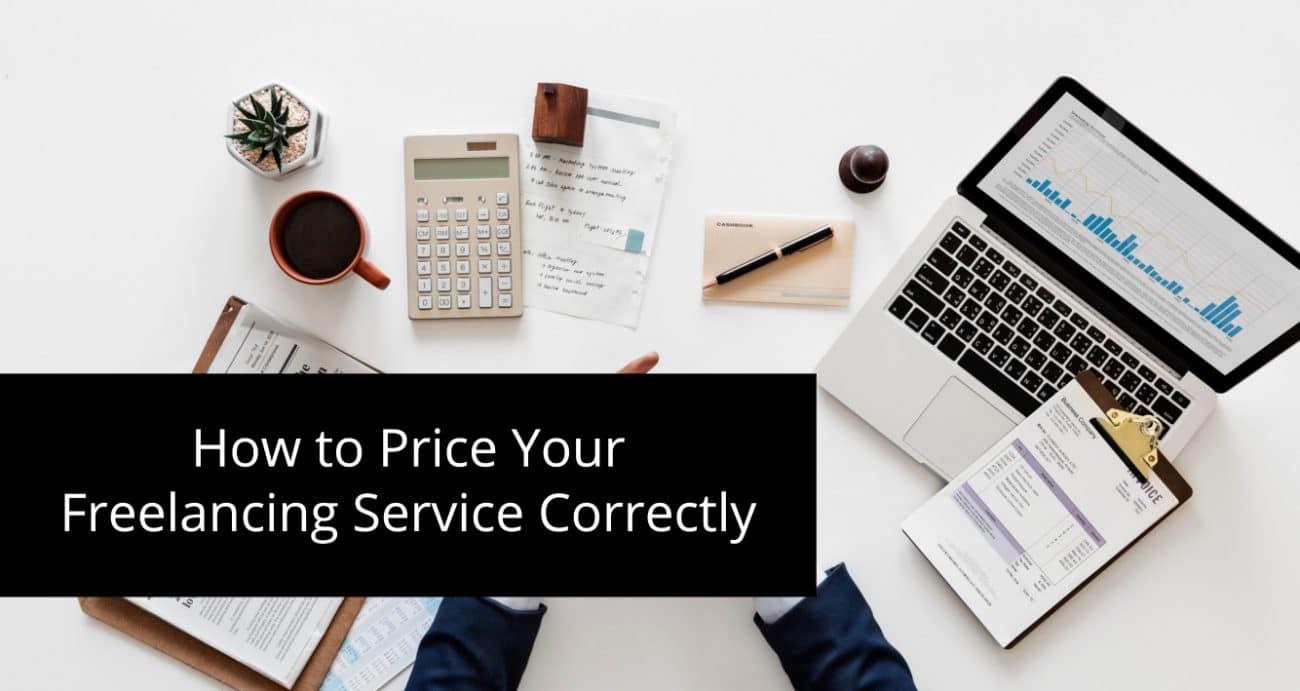Are you a part of the gig economy? If you’re like most of the American workforce, then your answer is yes.
By 2020, it’s expected that 40% of working Americans will be freelancers. That says a lot about the growing trend, but what’s not being talked about is how to set the prices for freelance services.
This is a major concern, especially for those just entering the market. You want to price yourself, so you’re making more than just ends meet, but not too high to where you’re not getting any clients.
So we’re going to take a look at how to price your freelancing service correctly. First, let’s take a look at some key findings.
What the Stats Say About Freelance Prices
Payoneer did a survey in 2018 that shows some compelling information about the state of freelance prices.
For example, the average hourly rate is around $19, but can range between $11 and $28. Admin and customer support reps tend to earn the least, while legal service providers make much more.
It’s also found that older freelancers earn more than their younger counterparts, which is understandable. Experience does play a role in how much you can make.
With the rates we’re seeing, you could imagine that not many are happy with what they’re charging. The overall income satisfaction of freelancers sits at 5.03 (measured between 1 and 10).
It’s no surprise that a whopping 68% of freelancers want to improve how much they earn.
If you’re in the same boat or want to avoid this dilemma altogether, then here are the steps you should take.
1. Research What Others Are Charging (or Paying) in Your Industry

Although you don’t want to base your price on other freelancers, you do want to ensure you’re pricing yourself competitively. You want to be at or slightly higher (or lower, depending on your strategy) than your counterparts.
There are several ways you can gather this intel. You can either search on Google for freelancers in your industry. Visit their sites to see if they post their experience and rates.
Another option is to connect with others in your field using LinkedIn, Facebook Groups, and forums. Get to know freelancers and ask about how they set their rates. You’ll find many are willing to post about them freely (while others will prefer to discuss over a DM).
Job boards can also give you an idea of what your clients are willing to pay freelancers. Use all the evidence you gather to get an idea of where your price point should be (based on your experience and services offered).
2. Choose Between Project and Hourly Rates
One of the toughest things to figure out as a freelancer is whether to charge clients by the project or by the hour. Now, if you do any amount of research online, you’ll find that a lot of freelancers loath hourly rates.
Let’s take a look at the pros and cons of hourly rates so you can decide for yourself.
The Pros
When you’re first starting out, it’s easier to understand. After all, it’s how you were paid as an employee all those years. Plus, your clients will likely ask for an hourly rate, so having one can make the price negotiation smoother.
It also seems like a fair way to charge for tasks — the client pays you for the amount of time you spend working.
As long as you’re upfront about how long you spend on each activity, charging hourly is rather transparent.
The Cons
One of the biggest pitfalls of charging hourly is that many clients will compare your rate to others. So it can easily turn into a race to the bottom ordeal. At this point, your service becomes a commodity.
Then there’s the fact that you’re penalized for becoming more efficient at what you do. For example, if you start out taking 5 hours to complete a project and charge $45/hr, then over time, your income will drop.
If each year, you improve your time by an hour, then by year three you went from earning $225 to $90 for the same project. This is the top reason why most freelancers are against charging an hourly rate.
It also increases the chances of freelancers pretending to work longer hours just to make more money. So the client and the freelancer are being hurt on either side.
Another downside is that you don’t have many hours to capitalize on throughout the week. You can only work but so many hours per day.
This means you’re putting a cap on how much you can earn monthly. For instance, if you’re charging $45/hr and are working 40 hours per week, you’re capped at $1,800 per week.
But when you charge by the project, then you’re able to earn much more per week. Let’s say you get 7 projects per week and charge $300 each — that’s $2,400 per week.
What makes this appealing is that as you become faster at your skills, you’ll be able to earn more and more as time goes on. You’ll be able to do 10 projects per week instead of seven, making you an additional $900 per week.
Lastly, project rates let you and the client know exactly what the cost will be ahead of time. There’s no room for disagreements about the pricing because it’s already been set in stone.
With hourly payments, the client may disagree with how many hours it actually took you to complete the job (or the rate you set).
But how do you set your project rates?
3. Calculate How Much to Charge

Now, when it comes time to set your project rates, you have to take into account how long it’ll take you. For example, if you’re a writer, you have to calculate time spent coming up with content ideas, researching the topic, writing the article, editing the article, finding images, and revisions (most include up to 2 revisions in their rate).
Although you’re not charging an hourly rate, you do want to have what’s called an internal hourly rate. This means you know how much you want to charge for the hours you work, but this is only for you to know. You use this rate to calculate your project rate. For example, if your price is $50/hr and you estimate a project will take 5 hours to complete, then your project rate will be $250.That’s the quote you give your client.
This becomes easier as you complete many similar projects and become better at gauging how long they’ll take, so you don’t end up ripping yourself off when you miscalculate.
As for determining your hourly rate, you’ll need to look at what others are charging in your industry (from the research you gathered in step one). And then do some math on your own lifestyle.
You’ll need to earn enough to cover your monthly costs, retirement, taxes, and have enough left over to save. For example, you’ll need to list the costs for:
- Rent or mortgage
- Health insurance
- Car insurance
- Car notes
- Office rental/lease
- Equipment and tools you use
- Accounting (software or experts)
- Annual or quarterly taxes
- Retirement
- Taxes
- Contractor fees
Add up all of the expenses you pay throughout the year. Then multiply your hourly rate by the number of hours you work per year to get your salary. If you’re not earning enough to pay all of your bills. You’ll need to increase your rates so that you have a cushion you’re satisfied with.
It’s also helpful to track how many hours you work weekly to get a more accurate depiction of your schedule. There are apps you can use to make it easier to calculate hours of productivity.
Some freelancers work this out backward — they come up with an annual salary they’d like to make and then divide that by the number of hours they work.
The difference will give you the hourly rate you should charge. Either way, make sure your price suits your lifestyle and is competitive.
Quick Tips for New Freelancers
Once you’re comfortable with the price you set, stick to your guns. You can be flexible if the client is going to generate long-term work. It also helps to lower your rates for clients that can help you get your foot in the door of a new market (samples are golden).
But do everything you can to avoid working with clients who are fishing for the lowest rates. If they don’t value your work, then you’ll find them to be a hassle to work with.
If you build a website, use a questionnaire to help weed out the low-paying clients. It’s an easy way to filter your emails, so you’re only being contacted by your ideal customers.
Price Your Services Today!
Alright, so now you have an idea of the process of pricing your services. So get to the calculating.
The beauty of pricing by the project is that you can always adjust your rate as you see fit. Plus, you can give yourself a raise without a backlash from your clients.
You give out your project rate based on how long it’ll take and the amount of work involved (and the value to the client).
So give it a whirl and don’t be afraid to play around with rates to see which suits your business and its clients. If you need a tool to write professional-grade proposals, then check out Prospero today!




